Why did the Orang Asli travel 9 hours, just to attend BERSIH 4.0?
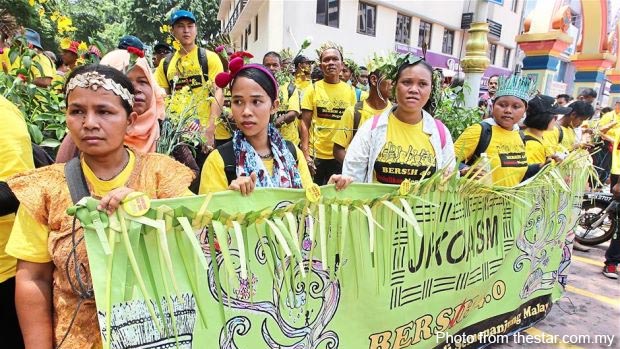
- 7.5KShares
- Facebook7.5K
- Twitter2
- Email5
- WhatsApp4
It’s been 2 weeks since BERSIH 4.0. Google the rally and you’re bound to get a bunch of stories about the Chinese, the Malays, the Power Rangers… but almost as ignored as our Indian friends were the Orang Asli.
Many of us urbanites (including some of us at the CILISOS.MY office) have the tendency of overlooking the Orang Asli, maybe because we’re too busy fighting over what directly affects us, or because we’ve been desensitised to news of their sufferings, or because it’s simply not sensational enough to wanna do something about it. So why are we talking about them now?
Well, let’s start by saying it again: they were there at BERSIH 4.0, and it was reportedly their first. But unlike us who easily hopped on the LRT (or flew back from Hungary or endured a long drive from Johor), the Orang Asli had to endure…
… a long, dire, super-expensive journey
“We came to Bersih 4 in four buses. Two buses from Kelantan. One from Grik, Perak. And one bus from Johor.” – Puri bin Angah, an Orang Asli who attended BERSIH 4.0
While we couldn’t get much info on their journey here, Puri told us that they left the rally at 5pm and reached home by 2am the next day. That’s a 9-hour journey! And it wasn’t smooth either – their rides are long and bumpy, and even worse when it rains. It’s not so much uncomfortable as it is tiring.

Photo from 2012 to illustrate they’re always travelling rough. From Reita Rahim taken from Gerai OA FB page
In Soo Wern Jun’s report in The Heat Online Asia, Perak-based Abri Yok Chopil, said that through JKOASM (Jaringan Kampung Orang Asli Semenanjung Malaysia), about 500 of them shared the cost to charter buses to participate in the KL-based rally.
“We used our own money from selling petai and other things. It cost RM1,500 to charter one bus for two days. We can feel the impact from the government’s policies [GST] and so we decided to join BERSIH 4.0.” – Abri Yok Chopil, as quoted from The Heat Online Asia
However, in Faiz Zainudin’s report in Free Malaysia Today, Yusri Ahon, vice president of JOAS (Jaringan Orang Asli Semalaysia) mentioned that they were given transportation to attend BERSIH 4.0, but all other expenses were on them.
“Memang BERSIH 4.0 yang taja kita datang sini, cuma dari segi pengangkutan baslah, dari Temerloh sehingga ke sini.” – Yusri Ahon, as quoted from Free Malaysia Today
Plus, the Gua Musang community in Kelantan was recently rocked with the sudden disappearance of 7 Orang Asli children on 23rd August. As of today, they have not been found yet. In Timothy Achariam’s report in The Sun Daily, Salim Tengau said that going for the rally was a painful decision as some of the missing children were his nephews and nieces.
“It was a tough decision to make, but my friends and family told me to go and represent them at the rally, to be the voice of the Orang Asli.” – Salim Tengau, as quoted from The Sun Daily
He adds that they didn’t know where to stay, and only “planned to sleep on the floor somewhere”. However, they found refuge at the St John’s Cathedral that night.
For a community that lives off what Mother Nature provides by selling handicraft and yield from the land, leaving their natural homes and heading to the big city is not an easy task… Mentally, physically, and financially. This begs the question – what drove them? (Don’t say bus driver.)
1. Their homes have been taken from them… for the 124786235th time
Did you know that Mutiara Damansara and Damansara Perdana were once Orang Asli land?

Context: IKEA is in Mutiara Damansara. Photos from jbrookes-sutonfilmas.blogspot.com and myberttravel2011.wordpress.com
Up till the early 1980s, the Temuan Orang Asli hunted and swam in its crystal clear streams, harvested forest vegetables, durians and petai there. It was their land. The forest was their ‘supermarket’, their ‘pharmacy’, their source of housing and their water supply. And it was free. Then it all changed.
In exchange for their countless (and priceless) acres of pristine forest, MK Land built them ‘Desa Temuan’, and gave each family a bungalow plus a flat to rent out. But it all went downhill for these Temuan – a sudden switch in environment with no education on how to adapt, many couldn’t even pay up their utility bills. There were even fears that they would end up as beggars.
“I shudder at the thought of what is happening.” – Siti Kasim, lawyer for the Orang Asli to CILISOS
Siti Kasim adds that development must be on Orang Asli terms and at their pace, and they must have autonomy and full rights to their land. And to be frank, these Temuan who live so near The Curve are considered among the ‘luckier’ ones.
Most recently in June 2015, at Gunung Arong, Johor, 100 officers from several government departments demolished a Jakun tribe’s kampung (with the knowledge of JAKAO Department of Orang Asli Development which is supposed to represent Orang Asli interests).
“They told us to remove all our belongings and move into the jungle, or they would push down our homes and shoot our chickens and dogs.” – Awang Rambai, as quoted from The Star. The villagers had their homes destroyed and now live in makeshift tents by the road.
“Furthermore, how do you expect the Orang Asli to give up their native territory on which they rely for their subsistence and trade it for only RM200 cash a month?” – Chung Yi Fan, researcher, as quoted from Malaysiakini
Over to our friends in Sarawak, the highly-controversial Bakun Dam (a mega-dam built in 2011) had submerged 700 square KILOMETRES of forest and farmland, displacing 10,000 people in the meantime. The displaced were also forced to pay nearly US$15,000 for government-built homes, throwing families into debt. Over a decade later, many families live in extreme poverty. More chilling effects of the Bakun Dam can be read here.
Today, they’re threatened with the upcoming Baram Dam (also a mega-dam) which could displace up to 20,000 people from 26 villages. And just so you know, the Baram Dam is only 1 out of 12 planned dams in Sarawak. (!!!) While there has been an ongoing blockade, it seems like the people have a glimmer of hope as their Chief Minister, Tan Sri Adenan Satem pulled the brakes on the development, wanting to study it a little more before proceeding.
(Food for thought: East Malaysia has SO many dams to generate electricity, but many parts of their states still lack proper power supply and other basic necessities…)
Why do all these keep happening?
2. Their legal rights seem non-existent
According to a research by Professor Maude E. Phipps, Malaysia’s leading geneticist, the ancestors of the Negrito communities (e.g. Kintak, Kensiu, Jehai, Mendriq and Bateq) were here 60,000-70,000 years ago.
Note that this is long before before the British mooted the concept of ‘Negeri-negeri Melayu Bersekutu’ (which later led to ‘Persekutuan Tanah Melayu’ or Malaya) from the different sultanates which were under the surzeinity of Siam, paying ‘bunga mas’ to the Siamese King. For those who might have forgotten our Sejarah classes, this was 1896 – a mere 120 years ago.
But ugaiz… Our Orang Asli friends were here 60,000 years before that.
Interestingly, Siti Kasim informed CILISOS that the British also instituted Orang Asli legal rights to the forest, called ‘Sakai Land’ back then. And copies of maps of their lands were given to the chief of each Orang Asli village. Over the years in the jungle, most of the maps were lost or damaged by jungle life.
There is, however, the ‘Aboriginal Peoples Act 1954‘ (revised in 1974). Aimed to prevent communist insurgents from getting help from or influencing the Orang Asli, it also has provisions which allow the Minister to prohibit outsiders from entering their area. But if you delve deeper, Colin Nicholas of the Center for Orang Asli Concerns (COAC) said that the act treated the Orang Asli as though unable to lead their own lives and in need of the protection of authorities to protect them.

At the same time, it grants the state authority to order any community to get out of an area, so if the state wishes to re-acquire their land, they can easily get the Orang Asli to leave with no legal recourse. To add salt to the wound, the state isn’t obliged to compensate for them.
“Kerajaan dilihat tidak bertindak adil kepada kami terutamanya melibatkan hak pemilikan tanah. Apabila kerajaan memberi satu-satu benda kepada kami, mereka akan mengambil sembilan daripada apa yang kami ada.
“Jadi kami merasakan ia adalah ketidakadilan kepada masyarakat orang asli dan disebabkan itu kami menghadirkan diri dalam perhimpunan pada hari ini.” – Yusri Ahon, vice president of JOAS, as quoted from Free Malaysia Today
But their house is so much more than just a roof over their heads…
3. Their homes are being destroyed in more ways than one
While most of us consider our home as a concrete building with four walls and a door, the Orang Asli considers the entire jungle their home.
When this writer bumped into Kelantan-based Puri bin Angah, he stood at the kerb of Jalan Tun Perak – right at the heart of BERSIH 4.0. All he wanted to show were the photos of the ‘lori hantu’ – timber lorries that were felling trees on his land.

Screengrab by Gerai OA
This has caused floods, smashed his village’s bridge, polluted his sole water supply, washed away his bountiful agriculture crops and even drove wildlife away. In essence, apart from destroying the house that he built for his family, the ‘lori hantu’ has also killed off their food and water supply.
While it may occur to some of you that Puri could go to an undamaged part of the forest, get this: a single tree doesn’t bear fruit all year round, so the community needs a variety of trees to meet their basic needs.
4. They really need us to stop ignoring them
“The ‘aboriginal people’ of Peninsular Malaysia are the most vulnerable and downtrodden people group because they have no real political representation. Some are educated, many still live in poverty and few have any means to articulate their seemingly lost cause.” – Lawrence Yong for Malaysiakini
The COAC notes that the Orang Asli population stood at 178,197 in year 2010 – that makes a mere 0.6% of the national population of about 28 million (year 2010). In Peninsula Malaysia, there are 869 Orang Asli communities, with 37.2% in interior/forest areas, 61.4% in forest-fringe or rural areas, and only 1.4% are settled in (or close to) urban centres.
With that in mind, there’s no wondering why they seem almost completely ignored by urbanites who make token mentions and see them and their fancy hats as a tropical wallflower – interesting to look at, but not enough to care about. With a tiny voice, the Orang Asli are in need of a loud haler to speak up for them, to bring light to their strife… just not a literal one, of course.
Most of these problems faced by the Orang Asli boils down to having their land taken away from them. Some poorly informed Malaysians may say, “Why don’t these Orang Asli people just move to another patch of jungle?”. Well, that’s like saying, “Here’s 50 sen; please get out of your house in SS2, and buy another house in Taman Tun with that money.” Cannot, right?
How you can help
Not all is doom and gloom, sayang. There is something you can really do to help fight for their rights to their Tanah Adat.
There’s an upcoming fundraiser called #getAsli, organised by the Bar Council Committee on Orang Asli Rights (COAR). It’s a smart casual, sit-down dinner aimed to creating awareness and education on the rights of the Orang Asli. The funds raised will be used to help uplift and develop the rural Orang Asli communities, even providing non-formal education of women and children, providing leadership training, strengthening their traditional culture and secure their livelihood.
You’ll also get to enjoy some traditional performances by the Orang Asli while learning more about their culture. Some basic deets:
- 8th Dec 2015 (Tues), 6.30pm – 11.00pm
- Grand Ballroom, Sunway Resort Hotel & Spa
- RM250/ticket or RM2,500/table (inclusive 6% GST)
- For more info: FB event page
If fundraisers are not your thing, you can also pass on kind donations to the COAR thru a
- Direct deposit (Hong Leong Bank Berhad, account: 00200756927; SWIFT CODE: HLBBMYKL),
- Cheque or bank draft payable to “Malaysian Bar COAR Account”, or
- Drop-off at the ground floor of the Bar Council Secretariat, 15 Leboh Pasar Besar, 50050, Kuala Lumpur.
Apart from that, you could also help their little voice get louder by creating awareness among your own circle of friends, whether or not they’re from the urban centres. Spread the word about their plight. Help pressure authorities when their land gets threatened again. Because honestly… the 0.6% of Malaysians need their home more than we need another Damansara Perdana.
Co-written by Jovian Anak Lee
- 7.5KShares
- Facebook7.5K
- Twitter2
- Email5
- WhatsApp4

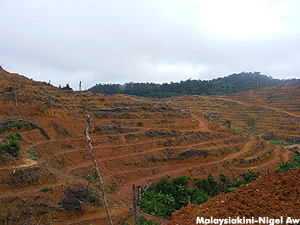
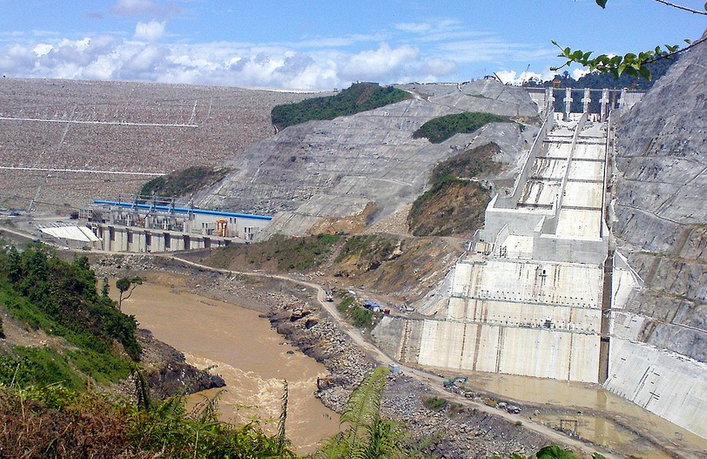
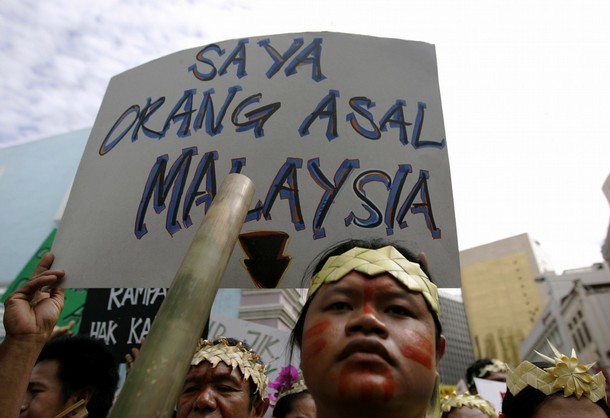
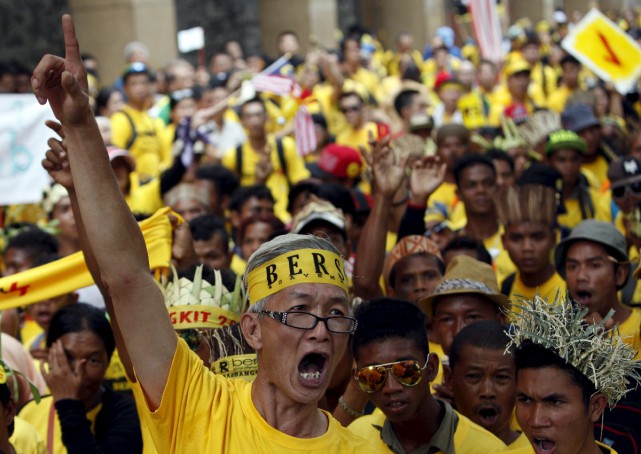

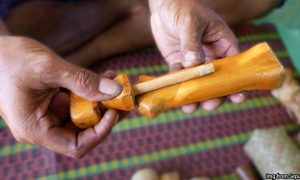

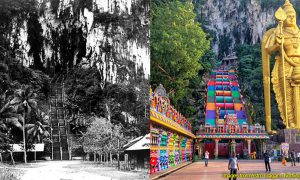

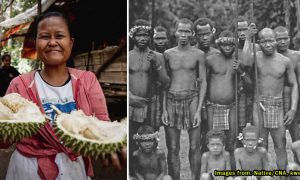

15 Comments